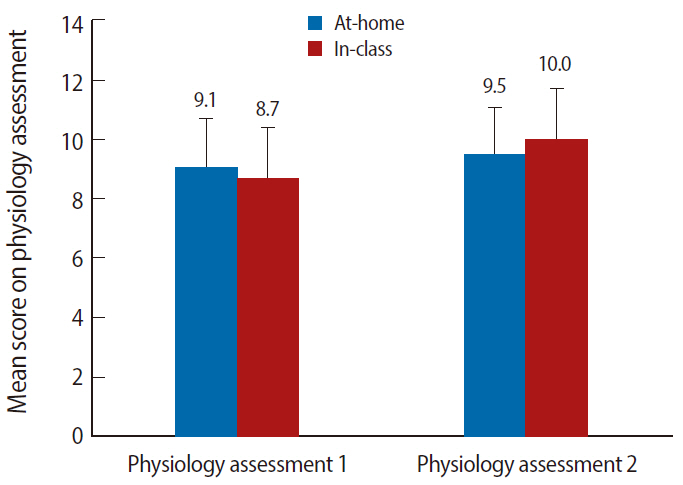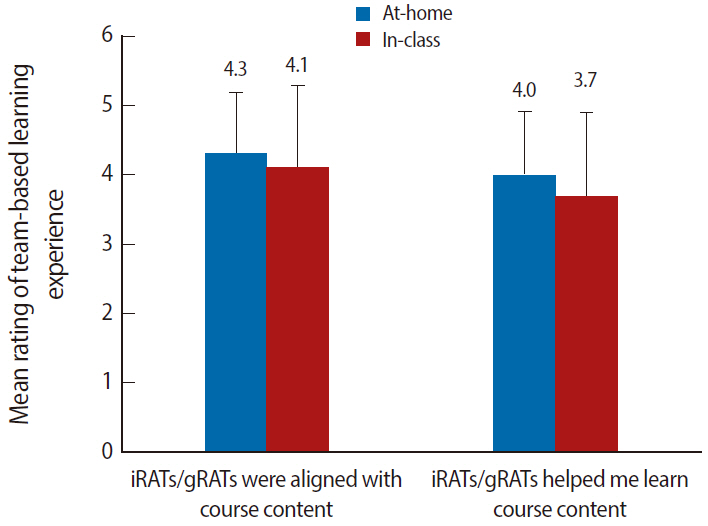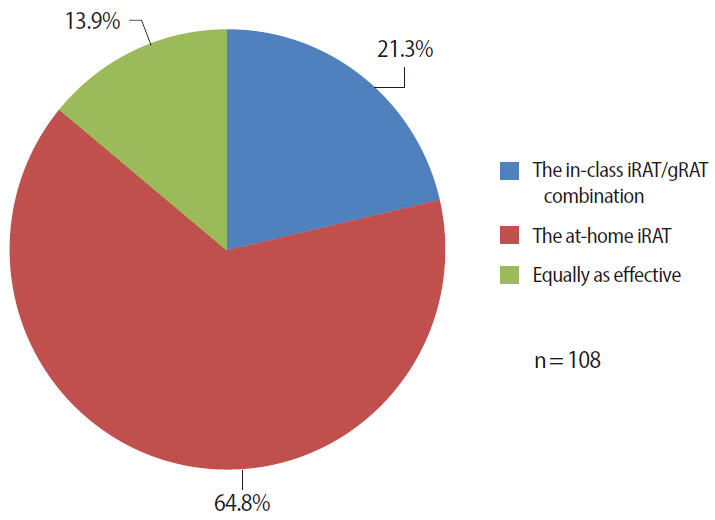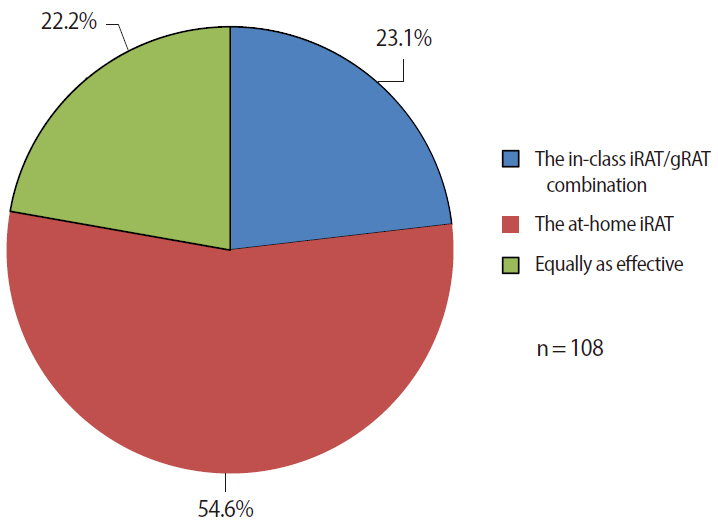J Educ Eval Health Prof.
2015;12:34. 10.3352/jeehp.2015.12.34.
A comparison of the effectiveness of the team-based learning readiness assessments completed at home to those completed in class
- Affiliations
-
- 1Department of Cell Biology, Duke University School of Medicine, Durham, USA. jennifer.carbrey@duke.edu
- 2Office of Curricular Affairs, Duke University School of Medicine, Durham, USA.
- KMID: 2402041
- DOI: http://doi.org/10.3352/jeehp.2015.12.34
Abstract
- PURPOSE
The readiness assurance process (RAP) of team-based learning (TBL) is an important element that ensures that students come prepared to learn. However, the RAP can use a significant amount of class time which could otherwise be used for application exercises. The authors administered the TBL-associated RAP in class or individual readiness assurance tests (iRATs) at home to compare medical student performance and learning preference for physiology content.
METHODS
Using cross-over study design, the first year medical student TBL teams were divided into two groups. One group was administered iRATs and group readiness assurance tests (gRATs) consisting of physiology questions during scheduled class time. The other group was administered the same iRAT questions at home, and did not complete a gRAT. To compare effectiveness of the two administration methods, both groups completed the same 12-question physiology assessment during dedicated class time. Four weeks later, the entire process was repeated, with each group administered the RAP using the opposite method.
RESULTS
The performance on the physiology assessment after at-home administration of the iRAT was equivalent to performance after traditional in-class administration of the RAP. In addition, a majority of students preferred the at-home method of administration and reported that the at-home method was more effective in helping them learn course content.
CONCLUSIONS
The at-home administration of the iRAT proved effective. The at-home administration method is a promising alternative to conventional iRATs and gRATs with the goal of preserving valuable in-class time for TBL application exercises.
MeSH Terms
Figure
Reference
-
1. Burgess AW, McGregor DM, Mellis CM. Applying established guidelines to team-based learning programs in medical schools: a systematic review. Acad Med. 2014; 89:678–688. http://dx.doi:.org/10.1097/ACM.0000000000000162.2. Vasan NS, DeFouw DO, Compton S. Team-based learning in anatomy: an efficient, effective, and economical strategy. Anat Sci Educ. 2011; 4:333–339. http://dx.doi.org/10.1002/ase.257.
Article3. Nieder GL, Parmelee DX, Stolfi A, Hudes PD. Team-based learning in a medical gross anatomy and embryology course. Clin Anat. 2005; 18:56–63. http://dx.doi.org/10.1002/ca.20040.
Article4. Persky AM, Pollack GM. A modified team-based learning physiology course. Am J Pharm Educ. 2011; 75:204. http://dx.doi.org/10.5688/ajpe7510204.
Article5. Agarwal PK, Karpicke JD, Kang SH, Roediger HL, McDermott KB. Examining the testing effect with open-and closed-book tests. Appl Cogn Psychol. 2008; 22:861–876. http://dx.doi.org/10.1002/acp.1391.6. Gharib A, Phillips W, Mathew N. Cheat sheet or open-book?: a comparison of the effects of exam types on performance, retention, and anxiety. Psychol Res. 2012; 2:469–478. http://eric.ed.gov/?id=ED537423.
Article7. Gopalan C, Fox DJ, Gaebelein CJ. Effect of an individual readiness assurance test on a team readiness assurance test in the team-based learning of physiology. Adv Physiol Educ. 2013; 37:61–64. http://dx.doi.org/10.1152/advan.00095.2012.
Article8. Deardorff AS, Moore JA, McCormick C, Koles PG, Borges NJ. Incentive structure in team-based learning: graded versus ungraded Group Application exercises. J Educ Eval Health Prof. 2014; 11:6. http://dx.doi.org/10.3352/jeehp.2014.11.6.
Article
- Full Text Links
- Actions
-
Cited
- CITED
-
- Close
- Share
- Similar articles
-
- Differences between Perceived Readiness for Interprofessional Learning in Nursing and Other Health-related Students
- Effects of Differences in Problem-Based Learning Course Length on Academic Motivation and Self-Directed Learning Readiness in Medical School Students
- A Study on Improvement of Teaching and Learning in Yonsei University College of Medicine
- A Study on Students' Academic Achievement and Perception of Team-Based Learning During a Medical Dermatopatholgy Lecture
- Effect of Simulation-based Practice by applying Problem based Learning on Problem Solving Process, Self-confidence in Clinical Performance and Nursing Competence





